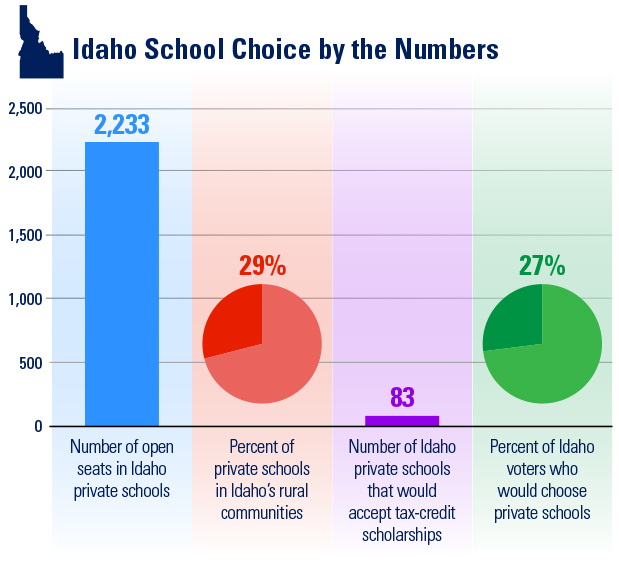Idaho Has Plenty of Private School Gems Worth Discovering
Idaho’s nickname, the Gem State, proves it has a rich history rooted in discovery and diversity. The same could be said for its future, especially if Idahoans were to increase the schooling options available to families.
Can school choice—the idea that parents leverage government programs to choose among schools and educational services for their children—work in rural areas? Some think not, assuming there aren’t enough options among which to choose. But a new survey suggests otherwise, showing there are private schools ready to assist in educating more children—if only the state would give families the ability to access such options.

A Friedman/Braun Research Inc. survey of Idaho voters found 27 percent would like to enroll their children in private schools. Obviously that is much greater than the current capacity of those schools; however, it also provides a tremendous opportunity moving forward, which is where school choice again comes in to play.
Through a broad-based school choice program, Idaho leaders could encourage a stronger education marketplace comprising a bevy of options to grow over time. Such a gradual change would allow Idaho’s schooling environment to better mirror its residents’ needs and interests.
The available research on school choice’s academic impact on students and schools as well as the financial cost for taxpayers and districts is exhaustive(ly in favor of school choice). That said, there is a lack of research on the supply slide of school choice—specifically how private schools react to the creation of such a program. Though as school choice programs continue to increase in number and size, other states’ experiences are proving insightful.
Take Indiana, home of the nation’s largest school voucher program. Before that program was passed in 2011, there were around 22,000 open private school seats in the state. However, just this past month, the Indiana Department of Education estimated 29,437 students are utilizing the program. How can that be? Put simply, new schooling options opened and many established schools found ways to increase capacity. It appears Field of Dreams was right: “If you build it, they will come.”
The same could be said in Idaho. First, as highlighted recently by Andy Smarick and Ellie Craig, there are more existing opportunities in rural areas than many realize. Second, enrollment in private school choice programs historically starts very low (around 5 percent of eligible students) and grows over time, giving the private education sector—and public schools—ample time to respond to families’ choices. And to that point, there is reason to expect rural private schools would launch and/or increase capacity, particularly as the program grows (again, with Indiana being a case in point).
According to the Friedman school survey, 29 percent of Idaho private schools are in rural areas. Clearly those areas can and do sustain other options, and demand already exists for the educational quality and differentiation those schools provide. Rural areas in Idaho are more diverse than most people realize and the distances involved do not deter parents from what works best for their children.
Moreover, it is estimated that 83 of Idaho’s private schools absolutely would participate in a school choice program should the legislature enact one—another 33 would consider it, and only five likely would not. Private schools are up to the challenge of increasing capacity.
Idaho’s private school marketplace has many gems families would like to call their own. And their decisions will determine how many more have yet to be discovered.




